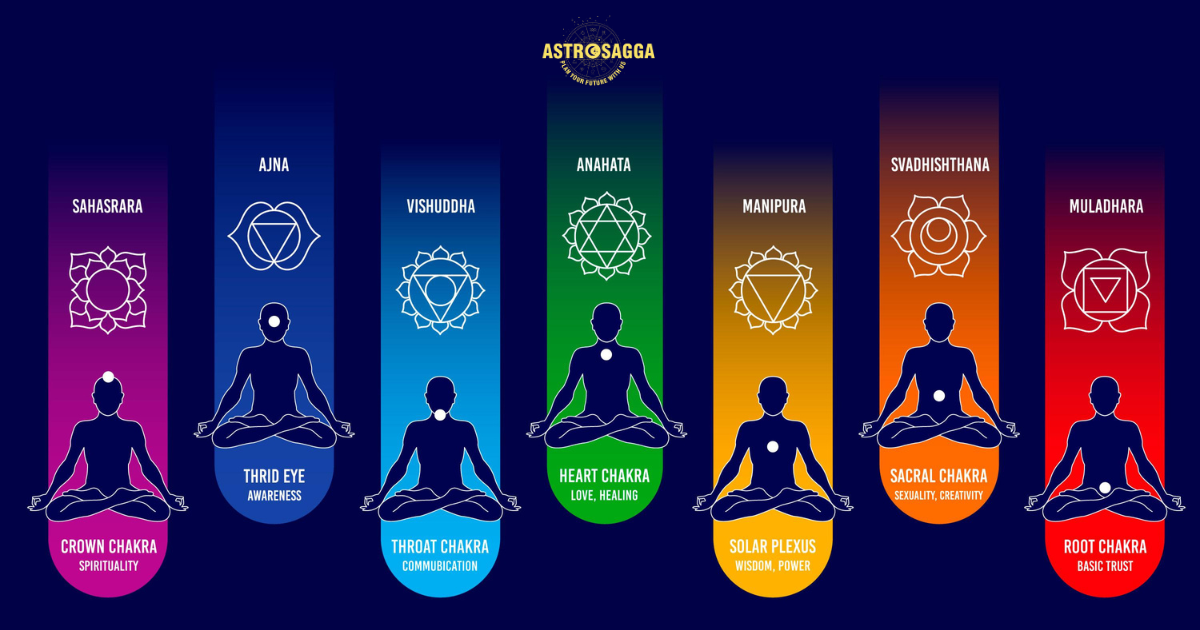The concept of chakras, deriving from ancient Indian scriptures, is a cornerstone of both traditional and modern holistic health practices. Chakras, meaning "wheels" in Sanskrit, are considered energy centers in the body. These seven primary chakras, located along the spine, play a crucial role in physical, mental, and spiritual well-being. In this blog, we will delve into each of the seven chakras, their significance, and how balancing them can harmonize the mind, body, and spirit.
The Origin and Significance of Chakras
The earliest mentions of chakras can be found in the Vedas, the ancient Indian texts dating back to 1500-500 BCE. These texts provide a comprehensive understanding of the energy centers and their functions. The Upanishads, part of the Vedas, specifically the Yoga Kundalini Upanishad, elaborate on the chakras, describing them as energy vortices that align the spine from its base to the crown of the head.
Chakras are believed to influence various aspects of life, including physical health, emotional stability, and spiritual growth. Each chakra is associated with specific attributes, colors, and elements, and governs different bodily functions and states of consciousness.
The Seven Chakras
Muladhara (Root Chakra)
Location: Base of the spine
Color: Red
Element: Earth
Mantra: LAM
The Muladhara chakra is the foundation of the energy body. It governs our sense of security, survival, and basic needs. When balanced, it provides grounding, stability, and a sense of safety. Imbalance can manifest as anxiety, fear, and financial instability.
Balancing Tips:
Grounding exercises such as walking barefoot on grass
Eating root vegetables
Practicing yoga poses like the Mountain Pose and Warrior Pose
Svadhisthana (Sacral Chakra)
Location: Lower abdomen, about two inches below the navel
Color: Orange
Element: Water
Mantra: VAM
The Svadhisthana chakra is the center of creativity, pleasure, and emotional well-being. It influences relationships, sexuality, and passion. A balanced sacral chakra leads to healthy emotional expression and creativity, while imbalance can cause emotional instability, sexual dysfunction, and feelings of guilt.
Balancing Tips:
Engaging in creative activities like painting or dancing
Spending time near water bodies
Practicing hip-opening yoga poses like the Bound Angle Pose and Cobra Pose
Manipura (Solar Plexus Chakra)
Location: Upper abdomen, around the stomach area
Color: Yellow
Element: Fire
Mantra: RAM
The Manipura chakra is the powerhouse of personal power, confidence, and self-esteem. It governs digestion and metabolism. A balanced solar plexus chakra results in self-confidence, motivation, and strong willpower. Imbalance can lead to low self-esteem, anger, and digestive issues.
Balancing Tips:
Practicing core-strengthening exercises
Eating yellow-colored foods like bananas and corn
Performing yoga poses like the Boat Pose and Sun Salutations
Anahata (Heart Chakra)
Location: Center of the chest
Color: Green
Element: Air
Mantra: YAM
The Anahata chakra is the center of love, compassion, and empathy. It bridges the lower and upper chakras, integrating the physical and spiritual aspects of life. When balanced, it fosters love, forgiveness, and inner peace. Imbalance can cause emotional distress, jealousy, and heart problems.
Balancing Tips:
Practicing acts of kindness and compassion
Spending time in nature
Performing heart-opening yoga poses like the Camel Pose and Bridge Pose
Vishuddha (Throat Chakra)
Location: Throat
Color: Blue
Element: Ether
Mantra: HAM
The Vishuddha chakra is associated with communication, self-expression, and truth. It influences the throat, thyroid, and vocal cords. A balanced throat chakra enables clear communication and authentic expression. Imbalance can result in communication issues, throat problems, and suppressed emotions.
Balancing Tips:
Singing or chanting
Drinking plenty of water
Practicing yoga poses like the Plow Pose and Shoulder Stand
Ajna (Third Eye Chakra)
Location: Between the eyebrows
Color: Indigo
Element: Light
Mantra: OM
The Ajna chakra is the center of intuition, insight, and mental clarity. It governs the mind, eyes, and brain. A balanced third eye chakra enhances intuition, foresight, and spiritual awareness. Imbalance can cause confusion, lack of focus, and headaches.
Balancing Tips:
Practicing meditation and mindfulness
Engaging in activities that stimulate the mind
Performing yoga poses like the Child’s Pose and Forward Bend
Sahasrara (Crown Chakra)
Location: Top of the head
Color: Violet or white
Element: Cosmic energy
Mantra: Silent mantra or OM
The Sahasrara chakra is the gateway to higher consciousness and spiritual connection. It is associated with enlightenment, wisdom, and unity with the universe. When balanced, it brings a sense of peace, transcendence, and oneness with the divine. Imbalance can result in spiritual disconnection, depression, and feelings of isolation.
Balancing Tips:
Practicing meditation and prayer
Connecting with the divine through spiritual practices
Performing yoga poses like the Headstand and Lotus Pose
Integrating Chakra Balancing into Daily Life
Balancing the chakras is a holistic practice that requires consistent effort and mindfulness. Here are some daily practices to help maintain chakra balance:
Mindfulness and Meditation: Regular meditation helps in calming the mind and aligning the chakras. Focusing on each chakra during meditation can enhance its balance and function.
Healthy Diet: Consuming a balanced diet rich in colorful fruits and vegetables can support the health of each chakra. For example, red foods like tomatoes and beets can nourish the root chakra, while green leafy vegetables can benefit the heart chakra.
Physical Exercise: Engaging in physical activities, especially yoga, can help in maintaining chakra balance. Each yoga pose is designed to stimulate specific chakras, promoting overall energy flow.
Affirmations: Positive affirmations related to each chakra can help in reinforcing its attributes. For instance, repeating “I am safe and secure” can strengthen the root chakra.
Energy Healing: Practices like Reiki, acupuncture, and sound healing can also be effective in balancing chakras. These therapies work on the energy body, promoting harmony and well-being.
Conclusion
Understanding and balancing the seven chakras can lead to profound transformations in one’s life. By harmonizing these energy centers, we can achieve a state of physical health, emotional stability, and spiritual growth. Drawing from ancient Indian scriptures, the wisdom of chakras offers a timeless guide to living a balanced and fulfilling life. Embrace this journey of self-discovery and healing, and unlock the potential within to thrive in harmony with the universe.
References
The Vedas and Upanishads - Sacred Hindu texts that provide the earliest references to chakras and their significance.
The Yoga Sutras of Patanjali - Ancient text that outlines the philosophy and practices of yoga, including the concept of chakras.
The Bhagavad Gita - A spiritual text that discusses the nature of reality, self-realization, and the importance of balancing the mind, body, and spirit.
By incorporating these practices and insights into your daily routine, you can begin to experience the profound benefits of a balanced chakra system, leading to a more harmonious and enriched life.












